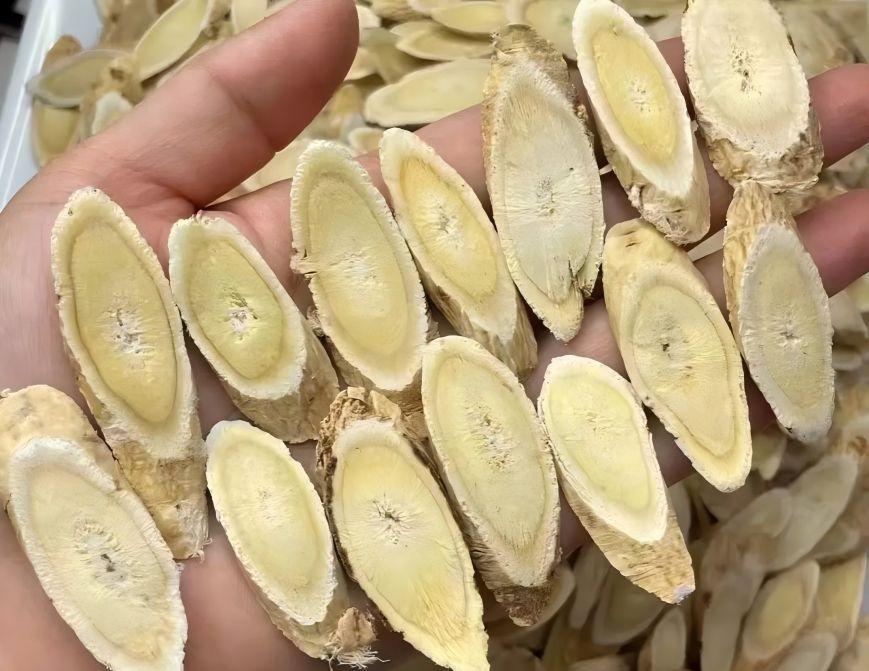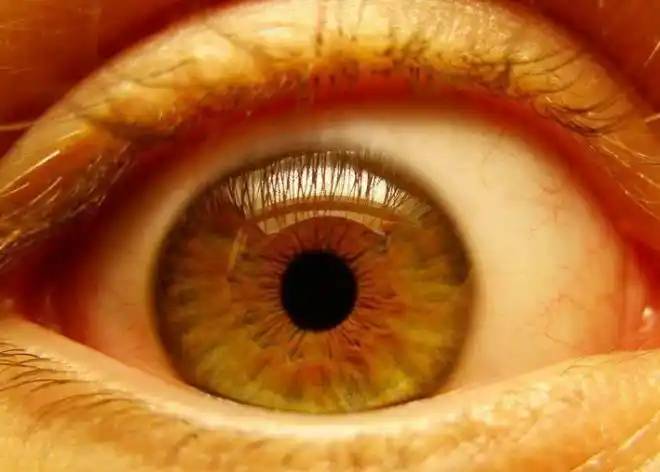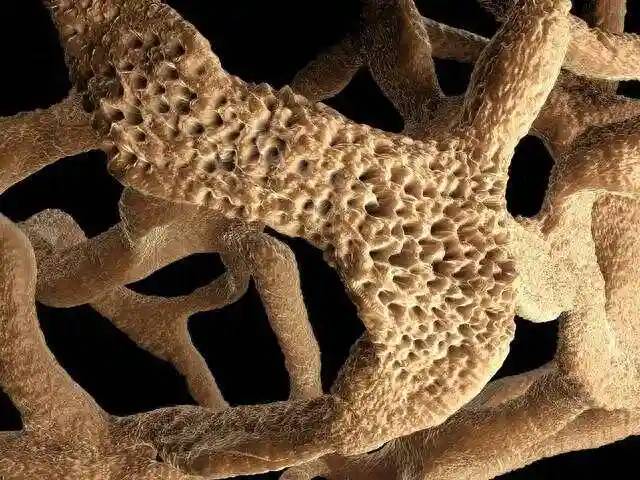힌디어로 아스트라갈루스 뿌리의 이점은 무엇인가요?
Astragalus is the dried root of the Mongolian milkvetch (Astragalus membranaceus (Fisch.) Bge. var. mongholicus (Bge.) Hsiao) or the membranous milkvetch (A. membranaceus (Fisch.) Bge.), of the legume family. It is sweet and warm in nature, entering the spleen and lung channels. It tonifies Qi and strengthens the the spleen, raising yang to lift the depressed, benefiting the defense to strengthen the body'의 저항, 이뇨작용으로 부기를 줄이고, 해독으로 새로운 조직의 성장을 지원합니다.내상과 피로, 비장 결핍성 설사, 폐 결핍성 기침, 장기 탈락, 구토 혈액, 혈변, 월경과다, 부종 또는 낫지 않는 장기 궤양, 기와 혈액 결핍의 모든 증상을 치료하기 위해 한의학에서 널리 사용된다.
astragalus의 주요 화학 성분 뿌리 are astragalus polysaccharide (APS), saponins, flavonoids and amino acids [2]. The polysaccharide components of astragalus mainly include glucan and heteropolysaccharides. Glucan includes water-soluble and water-insoluble glucans, which are α-(1→ 4)(1→6) glucan and α-(1→4) glucan, respectively. Heteropolysaccharides are mostly water-soluble acidic heteropolysaccharides, which are mainly composed of glucose, rhamnose, arabinose and galactose. A small amount contains uronic acid, which is composed of galacturonic acid and glucuronic acid; some heteropolysaccharides are composed of only glucose and arabinose [3]. This review focuses on the pharmacological effects of APS in the prevention of atherosclerosis, protection of the retina, improvement of memory and cognitive function, anti-aging, prevention of osteoporosis and treatment of Parkinson' s 질병이다.

1 Anti-atherosclerosis
Atherosclerosis has a very high incidence and seriously endangers human health. The causes of the disease are complex, and APS can prevent atherosclerosis mainly by intervening in its risk factors, such as regulating abnormal blood lipids [4], anti-hypertensive damage [5], anti-diabetes and improving insulin resistance [6], anti-oxidative stress, anti-infection and 염증 성 response, and inhibiting homocysteine levels. In addition, APS can intervene in cells related to atherosclerosis pathogenesis, such as anti-platelet aggregation and activation, regulating macrophage foam cell formation, anti-endothelial cell damage, inhibiting smooth muscle cell proliferation, and regulating dendritic cell inflammatory immune activation [7].
장정팡 등 8명은 고지방 식이를 이용하여 동맥경화증 모델을 유도하고 아스트라갈루스 다당류가 동맥경화증 모델에 미치는 효과를 관찰하였다.실험결과, 모델군과 비교하여 총콜레스테롤, 중성지방, endothelin 1, malondialdehyde는 유의적으로 감소하였으며, nitric oxide, superoxide dismutase 및 총 항산화 활성은 유의적으로 증가하였음을 확인하였다.대동맥 위협판의 면적이 현저히 감소되었다.아스트라갈루스 다당류는 죽상경화 방지 효과가 있으며, 그 기전은 항산화 및 혈관 내피세포에 대한 보호 효과와 관련이 있을 것으로 결론내렸다.
대식세포에 의한 지질의 식균작용으로 거품세포를 형성하는 것이 죽상경화반 형성의 핵심이다.대식세포 막의 Toll-like receptor 4 (TLR4)는 죽상경화반의 형성과 관련이 있다 [9].Chen Rui et al. [10]은 astragalus polysaccharide의"mildly oxidized modified low-density lipoprotein (mmLDL)-TLR4-macrophages"에 대한 개입을 관찰한 결과 APS는 mmLDL에 의해 유도된 TLR4, Syk, Erk 및 Paxillin 단백질 인산화 수준의 증가를 억제하여 세포 내 지질 축적을 감소시키고, 발포세포의 생성을 감소시켜 죽상경화 억제 효과를 발휘할 수 있음을 밝혀내었으며;그리고 APS의 위의 효과는 일정 범위 내에서 집중도가 높아질수록 강화된다.이를 통해 APS 가 동맥경화증을 예방하고 취약한 플라크를 안정화하는 효과가 있음을 밝혀 향후 임상과 실험 연구를 위한 실마리를 제공한다.
2 망막 보호
망막병증은 흔히 볼 수 있는 눈 질환이며, 최근 들어의 보호 효과에 대한 연구가 많이 이루어지고 있습니다astragalus polysaccharide on retinal cell damage. The retina is histologically divided into 10 layers, from the outside in: the pigment epithelium layer, cone and rod cell layer, external limiting membrane, external granular layer, external plexiform layer, internal granular layer, internal plexiform layer, ganglion cell layer, nerve fiber layer, and internal limiting membrane. Si Junkang et al. [11] observed that astragalus polysaccharide has a protective effect on hydrogen peroxide-induced oxidative damage to retinal ganglion cells (RGCs) in rats. Among them, the cell activity of the astragalus polysaccharide intervention group at each concentration was higher than that of the hydrogen peroxide damage group by the MTT method, indicating that astragalus polysaccharide can inhibit hydrogen peroxide-induced apoptosis of rat RGCs. In recent years, it has been found that oxidative damage to retinal pigment epithelium (RPE) cells is related to the occurrence of age-related macular degeneration [12-14].
ARPE-19세포는 성체 망막의 RPE에서 유래되며 RPE의 다양한 기능을 반영할 수 있다.이들은 인간 RPE의 기능과 분자 메커니즘을 탐구하기 위한 in vitro 세포 모델로 널리 사용되고 있다.ARPE-19세포를 손상시키기 위한 과산화수소의 사용은 생체 내 RPE의 산화적 스트레스 상태를 시뮬레이션하기 위해 여러 차례 확인되었다 [15-18].시준강 등 (19)은 과산화수소로 in vitro에서 배양된 ARPE-19세포에서 산화적 손상을 유도하였고, APS의 다양한 농도로 개입하여 보호하여 ARPE-19세포에 대한 peroxide-induced oxidative damage에 대한 APS의 보호효과를 확인하였다.본 연구는 Astragalus 약물을 이용한 당뇨망막병증 치료에 대한 확실한 실험적 근거를 제공한다.

3기억력과 인지 기능을 향상시킨다
Alzheimer's 병 (AD)은 중추신경계의 흔한 퇴행성 질환이다.주된 병리적 변화는 해마 조직의 뉴런 수가 감소하고 얼굴에 노인성 플라크 (SPs) 가 형성되는 것이다.SPs의 주요 성분은 β-amyloid (β) [20].광고의 pathogenesis는 아직 완전히 이해 되지 않고 다양 한 가설에는 오직 cholinergic 뉴런을 포함 한 가설, 그 β-amyloid 독성 가설, 타우 단백질 가설, 가설의 인슐린, 그리고 자유 롭게 급진적인 가설이 손상 될 수 있습니다.현재, Alzheimer&의 주요 치료#39;s 병 [21]의 진행을 늦추는 것이다.
초기 AD 생쥐에서는 학습 및 기억 능력의 저하가 주된 징후이다.연구에 따르면 APS는 쥐의 학습 능력과 기억 능력을 향상시킬 수 있다 [22].페이 Hongxin et al. [23]에 의해 모델 마우스를 사용 광고 양자나 보고 주입 한 β 1-42 관련 된 요인을 탐험 하기 위해 물 미로를 사용 하여 학습 력과 기억력을 쥐을 그들의 학습과 기억 능력을 테스트였다.그 결과 APS에서 한 역할을 했을 통한 광고의 치료의 수준을 억제하는 β과 IL-6 단백질, 학습과 기억력을 향상시 킬 수 있 기능과 해마 뉴런 광고 모델의 구조 형태적 쥐, 그들의 손상을 줄이고, 심지어 그들을 다양 한 정도에 복원하다.또한 AD 모델 생쥐의 혈액 뇌 장벽 손상 정도를 감소시켰다.이 모든 것은 APS 가 AD mice에 일정한 치료효과가 있음을 시사하며, 임상연구 개발 및 치료에 이론적 근거를 제공하고 있다.
제2 형 당뇨병 (T2DM)은 뇌 손상을 초래할 수 있는데, 주로 기억력 감퇴와 인지 장애로 나타난다.리나 등 (24)은 APS 가 제2 형 당뇨병 모델 쥐에 미치는 영향을 연구한 결과 APS의 중용량 및 고용량 투여군의 쥐의 해마에서 superoxide dismutase 활성이 유의하게 향상되었고, 해마의 말론디알데하이드 함량이 유의하게 감소되어 astragalus polysaccharide 가 DM으로 인한 인지 장애를 개선하는 효과가 있음을 확인하였으며,그리고 항산화 스트레스와 항세포사멸 효과를 통해 T2DM으로 인한 뇌 손상으로부터 보호할 수 있을 것이다.임상에서 astragalus 가 DM으로 인한 기억 상실 환자에게 일정한 효과가 있다는 것이 밝혀졌으며, 이는 DM 뇌 손상 개선에 미치는 효과가 입증되었습니다.그 메커니즘은 산화 방지, 감염 방지, 세포 사멸 방지에 의해 신경 세포를 보호하는 것일 수 있다.
4 노화 방지
연구에 따르면 노화의 본질은 줄기세포의 감소, 면역력의 저하, 조직 및 장기의 기능 퇴화, 노화 방지 유전자의 감소 등이다.세포노화는 산화반응성이 강한 활성산소에 의해 발생한다.과도한 활성산소는 신경세포의 손상을 초래하여 뇌의 전체 RNA와 단백질 함량을 감소시키고, 뇌의 뉴런의 밀도를 감소시켜 학습 및 기억 능력의 저하 및 동물의 노화를 초래한다 [25].
아스트라갈루스는 보디 &를 강화시키는 효과가 있다#39;s resistance to free radical damage and anti-aging. The saponins, flavonoids and polysaccharides contained in the traditional Chinese medicine astragalus extract have the effect of scavenging superoxide anions and hydrogen free radicals, increasing the activity of superoxide dismutase, catalase and catalase in animals and reduce lipid peroxidation levels in animals [26]. D-Galactose is a normal nutrient component of the body. When there is too much of it, galactose oxidase can catalyze its conversion into aldose and hydrogen peroxide, which produces superoxide anion radicals. Zhong Ling et al. [27] reproduced a D-galactose mouse aging model and found that astragalus polysaccharides can increase the thymus index and spleen index of aging model mice; reduce malondialdehyde content and increase the activity of and increase the activity of superoxide dismutase, glutathione peroxidase and catalase. The anti-aging effect of APS and its mechanism may be achieved by enhancing the body'의 면역 기능, 신체를 향상 's 항산화 용량 및 직접 활성 산소를 청소.
5 Anti-osteoporosis
에스트로겐 결핍은 뼈 손실로 이어질 수 있다.장홍보 등 (28)은 astragalus 다당류가 쥐의 골다공증에 미치는 영향을 탐색하기 위하여 생후 8개월 된 암컷 SD 쥐의 난소를 제거하여 난소절제 쥐의 골다공증 모델을 확립하였다.astragalus polysaccharide 가 난소절제 쥐에서 골다공증 예방 효과가 있음을 확인하였으며, 난소절제 쥐에서 골흡수 억제 효과와 골형성 촉진 효과가 동시에 있는 것으로 판단된다.APS는 체외에서 조골세포의 증식과 분화에 양방향 조절 역할을 하며, 자연적으로 노화된 조골세포의 증식 능력에도 일정한 회복 효과가 있다는 것이 보고되었다 [29].APS는 골세포의 수와 활성을 억제하고, 난소 절제 마우스의 골량 감소를 막을 수 있으며, [30] 주로 골흡수를 억제하는 니에레스롤과는 다르며, 동물&에 자극 효과가 없다#39;s uterus. In recent years, long-term use of hormone replacement therapy by menopausal women has certain side effects. Astragalus polysaccharide is an extract of astragalus, 큰 독성 부작용 없이 기를 이롭게 하는 핵심 강장제.이를 더욱 발전시켜 폐경 후 여성의 골다공증 예방에 활용할 수 있다.

파킨슨&의 예방과 치료 6#39; s 질병
Chen Lu 등 [31]은 PD 쥐 모형을 정립하고 행동검사와 ELISA 검사를 이용하여 rat&를 관찰하였다#39; Astragalus polysaccharide 군 (APS 군)에서 치료 1일, 7일 및 14일 후의 s 회전 거동 및 14일째 흑질의 병리적 변화와 뇌조직 내 염증성 사이토카인의 함량 변화를 대조군 (PD 군)과 비교하였다.APS 군의 회전수는 PD 군에 비해 낮아 양성 대조군에 비견할 수 있었으며, tyrosinase 활성은 PD 군에 비해 유의하게 높은 것으로 나타났다.흑질에서 bFGF 단백질의 발현도 PD 군보다 낮았으며, 뇌조직의 염증성 사이토카인의 함량도 유의적으로 감소하였다.이것은 astragalus polysaccharides 가 Parkinson&를 치료할 수 있음을 나타냅니다#39; 면역 조절 효과를 통한 s 병.
7 결론
아스트라갈루스는 매우 높은 임상 가치를 가지고 있으며 약용 식품 보충에 적합합니다.그러나 현재 아스트라갈루스의 임상은 주로 전통적인 가공 및 decoction 방법에 국한되어 있으며, 이용률과 시장 전환율은 높지 않다.현대 실험 기술이 발전함에 따라 특정 질병에 대한 표적 치료에 점차 초점을 맞추고 있다.따라서 아스트라갈루스 다당류의 약리학적 효과를 연구하는 것은 매우 중요하다.현재, 아스트라갈루스 다당류의 약리학적 효과에 대한 광범위한 연구가 수행되었다.이전의 연구들은 면역체계 개선, 항종양, 항바이러스, 간과 신장을 보호하고 혈당과 혈압을 낮추는 것에 중점을 두었다.최근 들어 아스트라갈루스 다당류에 대한 연구가 점차 세밀해지고 있으나 아직까지 많은 기전이 불분명하다.
This article mainly summarizes the pharmacological effects of astragalus polysaccharides동맥경화증의 예방, 망막의 보호, 기억력과 인지기능의 개선, 노화방지, 골다공증 예방, 파킨슨&의 예방 및 치료에서#39;s 병, atherosclerosis의 예방 및 치료에 대한 미래의 연구에 새로운 방법을 제공하기를 희망하며, 알츠하이머 's 병, 골다공증, 그리고 파킨슨 ' s 질병이다.그러나 아스트라갈루스 다당류에 대한 임상 연구는 심층적이지 않고, 부작용도 충분히 보고되지 않았으며, 실험 연구 결과의 전환율이 높지 않고, 임상 실무에 잘 봉사할 수 없었습니다.따라서, 아스트라갈루스 다당류에 대한 종합적인 연구는 여전히 장기적인 프로젝트이며, 향후 아스트라갈루스 다당류의 약리학적 효과를 좀 더 알아보기 위한 추가적인 연구가 필요하다.
참조:
[1] 가오슈민.중국마테리아 [M].북경:중국전통의학출판사, 2007:428.
[2] 통칭 신.아스트라갈루스 (J)의 주요 활성 성분의 약리학적 효과.대한시젠국의학, 2011, 22(5):1246-1249.
[3] 천구휘, 황원봉.연구논문:Astragalus membranaceus의 화학적 조성과 약리학적 효과에 관한 연구 진행 (J.중국신약학회지, 2008, 17(17):1482-1485.
[4] 통홍리, 티안야핑, 왕더칭 등이 있다.astragalus polysaccharide에 의한 고지혈증을 가진 쥐의 혈중 지질 조절 (J.중국임상재활, 2006, 10(11):68-70.
[5] 장 JZ, 천 LG, 후 XQ 외.astragalus polysaccharide 가 고혈압 환자의 손상 혈관내피세포에서 TLR4와 NF-kB의 발현에 미치는 영향.산동대학교 (보건학) 논문집 2010, 48(12):120-123.
[6] 량리후안, 투펑페이.astragalus polysaccharides의 약리학적 효과에 대한 연구 진행 [J.한약학, 2010, 21(43):4113-4116.
[7] 셰샤오리, 구닝.astragalus polysaccharide anti-atherosclerosis에 대한 연구 진행 [J.Shi Zhen National Medicine 국가의학, 2014, 25(6):1463-1465.
[8] 장정팡, 양수진, 장수푸.astragalus polysaccharide의 anti-atherosclerotic 효과와 메커니즘에 대한 연구.Chinese Journal of Atherosclerosis, 2011, 19(3):268-269.
[9] 후궈징, 루자오양, 왕솽.Toll-like receptor와 죽상경화증 취약 플라크와의 관계 (J.Chinese Journal of Arteriosclerosis, 2012, 20(5):477-480.
[10] Chen R, Gao Y. astragalus polysaccharide 가 TLR4, Syk, Erk 및 Paxillin의 단백질 인산화 수준과 thp-1 유래 대식세포의 식세포 기능에 미치는 영향 [J].한의학회지 2016, 31(5):1679-1683.
[11] 시준강, 구준구.쥐 망막신경절세포에서 과산화수소에 의해 유도된 산화적 손상에 대한 아스트라갈루스 다당류의 보호효과 [J].대한한의안과학회지, 2014, 24(4):235-239.
[12] 프롬소트 W, 베라난카 메감 R, 아난스 S 외.L-2-oxothiazolidine4-carboxylic acid는 망막 색소 상피에서의 산화 스트레스와 염증을 약화시킵니다 [J].MolVis, 2014, 20(1):73-88.
[13] Khandhadia S, Lotery A. 「 Oxidation and age-related macular degeneration:insights from molecular biology 」.Expert Rev Mol Med, 2010, 12(1):34-36.
[14]시 W, 유 W, 자오 M 등.인체망막색소상피에서 산화적 스트레스에 대한 paeoniflorin의 보호효과 (Protective effect of paeoniflorin in vitro)Mol Vis, 2011, 17(15):3512-3522.
[15] 머시 RK, 라비 K, 발라이야 S. 루테인은 세포독성 산화스트레스로부터 망막색소상피를 보호한다 [J].피부 및 안구독성학, 2014, 33 (2):132-137.
[16] Liu JH, Chen MM, Huang JW 등.H2O2 중 mannitol의 치료효과 및 작용기전 (Therapeutic effects and mechanisms of mannitol during H2O2 induced oxidative stress in human retinal pigment epithelium cells)J Ocul Pharmacol Ther, 2010, 26 (3):249-257.
[17]기 다바사파 A, 바울러 MN, 바렛 CM 외.ER{beta}-selective agonist인 GTx-822는 MAPK와 PI3-K 경로 [J]를 활성화시킴으로써 망막색소 상피 (ARPE-19)를 산화스트레스로부터 보호한다.Invest Ophthalmol Vis Sci, 2010, 51(11):5934-5942.
[18] 자오리잉, 니우잉연, 저우잔유.과산화수소는 인간의 망막색소상피세포에서 노화를 유도하고 그 메커니즘 [J.안과학 신진 (New Advances in Ophthalmology), 2011, 31(9):804-806.
[19] 시준강, 구준구, 구다동 외.인간 망막색소상피세포에서 과산화수소로 유도된 산화적 손상에 대한 아스트라갈루스 다당류의 보호효과 [J.안과학회, 2015, 35(1):18-21.
[20] 장 G, 우 J, 장 M 등.알츠하이머 치료 연구 진행 ' 전통 한의학 [J]으로 s 병.Chinese Journal of Experimental TCM, 2014, 20(6):217-22.
[21] 잉 X, 우 Z, 레이 Y 등.Alzheimer&의 병원성 및 치료약제에 관한 연구 진행#39;s 병 [J].중국약학, 2014, 25(33):3152-3155.
[22] 완펭, 왕시.astragalus polysaccharide 가 생쥐의 학습과 기억에 미치는 영향 [J].연변대학의학지, 2011, 34(1):23-25.
[23] 페이홍신, 가오인, 손리희 외.astragalus polysaccharide 가 Alzheimer& 생쥐의 해마 조직에 미치는 영향 (Effects of astragalus polysaccharide on hippocampal tissue of mice with Alzheimer's 병 [J].중국노인학회지 2015, 35 (16):4426-4429.
[24] Li N, Li H, Liu D. 당뇨쥐의 인지기능장애에 대한 아스트라갈루스 다당류의 개선효과 (J.중국노인학회지 2017, 37(9):2098-2100.
[25] 비민, 인정.호두 알맹이 추출물의 뇌 노화 억제 효과에 관한 실험적 연구 (J.현대한의학 연구와 실천, 2006, 20(3):35-37.
[26] 황신, 서자, 마위.한의학 Astragalus의 의료미용 응용과 전망 (J.대한미용의학회지 2017, 26(5):123-125.
[27] 종링, 왕젠푸, 원데젠.astragalus polysaccharide의 항노화 효과에 관한 실험적 연구 (J.중국응용생리학회지 2013, 29(4):350-352.
[28] 장홍보, 조원보, 최원징 외.난소절제 쥐에서 astragalus 다당류의 골다공증 억제 효과에 관한 실험적 연구 (J.유린사범대학교 논문집 2012, 33(5):51-55.
[29] 왕영준, 송리준, 손애선 외.아스트라갈루스 다당류의 추출과 조골세포의 골형성 능력에 미치는 영향 in vitro [J.대한정형외과학회지 1999, 7(6):3-6.
[30] 류홍웨이, 양시즈, 서계희 외.Neierestrol은 난소절제술 후 쥐의 골다공증을 예방한다 [J.서중의과대학 논문집, 1993, 45(1):40-44.
[31] 천루, 조운.Parkinson&에 대한 astragalus polysaccharide의 치료 효과 및 메커니즘#39;s 쥐 모델 [J].세계과학기술연구회, 2015, 37(2):168-171.
-
Prev
아스트라갈루스 추출물이 면역계에 도움이 되나요?
-
다음
Astragalus Membranaceus 뿌리에서 Astragalus Polysaccharides를 추출하는 방법은?


 영어
영어 프랑스
프랑스 스페인
스페인 러시아
러시아 한국
한국 일본
일본



